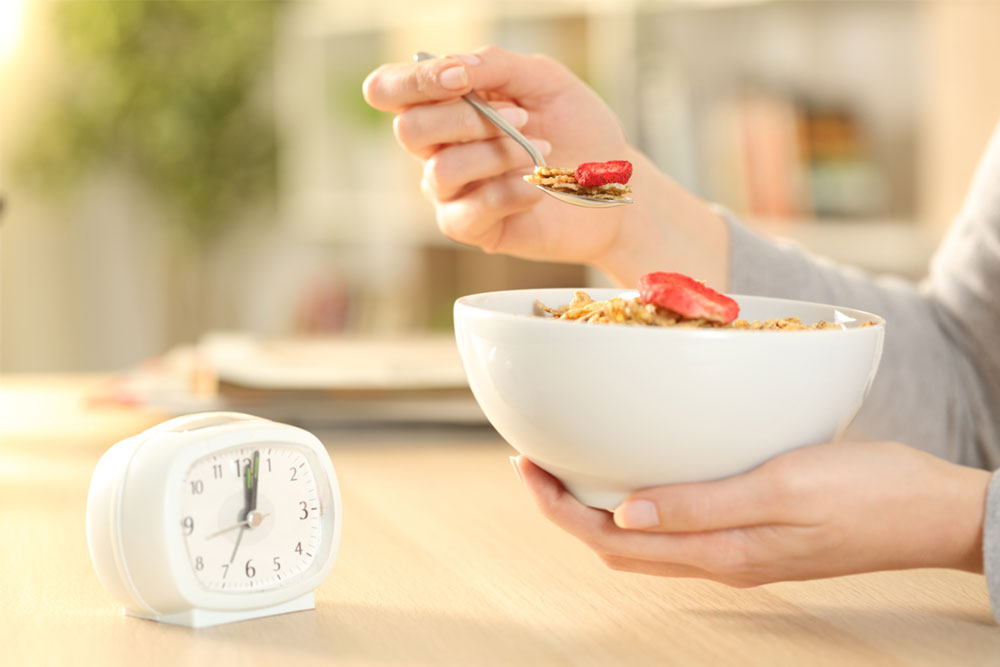You’ve heard it being spoken about, and have perhaps even scrolled through a few app promotions for it. But what is intermittent fasting? Simply put, intermittent fasting is the eating pattern in between specific time periods. It is more like an eating schedule than a diet plan, and specifies the when to eat, not the what. Quite popular in the health and fitness community, have you wondered why this practice is so famed? We spoke to a dietician who shared everything you need to know about intermittent fasting.

While fasting is definitely not a new concept, with intermittent fasting, a lot of changes take place within the body. Dr Archana Batra, nutritionist, physiotherapist, and a certified diabetes educator, explains, “During the fasting period, carbs in the foods get converted to glucose which provides energy to the cells. When there is an excess, the sugar or glucose gets stored in the body as fat. There is a hormone called insulin which gets secreted from pancreas, which is responsible for driving the energy into the cells. When the insulin levels drop, the fat cells releases the stored sugar to be used as energy. This in turn reduces fat.”
Intermittent fasting also plays a significant role in controlling our metabolism. “It triggers an immune response that repairs the cells and produces a positive metabolic change in the body. For example, it reduces the triglycerides (stored fats) and LDL (bad) cholesterol, and leads to improvement in blood pressure and blood glucose levels,” says Dr Batra. The effectiveness of this diet in the long run depends on how you follow it. “This diet works if you follow a good approach to intermittent fasting. Like, when you eat your food before sunset and then have the next meal the next morning, you will see and feel advantages or health benefits such as better insulin regulation and better heart health, and it will help increase your lifespan, too. But if you do it mindlessly, which means, you aren't conscious of the food that you are eating (during the eating window), this diet can then have bad effects like high cholesterol levels in the long run. You are also predisposed to various vitamin and mineral deficiencies.”
Much like a lot of diets, intermittent fasting for weight loss works for those who are otherwise healthy. However, some precautions need to be taken. “This is a great system for young and otherwise healthy individuals, between the ages of 20 to 50, who want to lose weight. Skipping meals isn’t a good idea and can even be dangerous for diabetic patients who are on medications/insulin, as it can cause hypoglycaemia (the condition where your blood sugar is lower than normal). Those who take medications for blood pressure or heart ailments are prone to imbalances of electrolytes, namely sodium and potassium, during prolonged fasting hours. Sometimes people consume fatty stuff or binge on unhealthy foods during the eating window, which can lead to increased cholesterol levels,” says Batra.

Dr Batra alerts us to the following signs to understand if it is working or not:
- If you have any gastric issues, you should avoid doing this diet. If you have developed any gastric issue while intermittent fasting, it is better to stop and reach out to your nutritionist for further assistance.
- If you get a migraine or headache, switch to having smaller intervals in between frequent meals.
- If you feel stressed or feel that you have emotional or behavioural eating issues, this diet might not be a good option for you. You might end up binge eating, or skipping meals altogether, causing you to further fall sick.
- This diet is ideally not recommended for athletes or those who do strenuous physical activity, as energy levels may fluctuate depending on the body’s requirements.
- Put a stop to fasting immediately if you think your body is reacting negatively to it, i.e., low blood sugar, feeling extremely cranky when angry, sometimes even delayed periods. Also avoid intermittent fasting if you are underweight.

There are variations in the schedule depending upon the kind of routine you have. You may choose what works best for you accordingly, in consultation with a nutritionist. According to Dr Batra, there are three popular variations, which are:
- Time Restricted Fasting (14/10 or 16/8 or 15/9)
The numbers denote the hours one will fast and consume food. The most preferred one is usually the 16/8, which means that one will fast for 16 hours and consume food in an eight hour window. However, the time frame differs from person to person on the basis of their schedule. While you can have anything you please during the eating window, it is advisable to make nutrition dense choices to get the maximum benefit out of intermittent fasting.
- Restrict calories to 500 or 600 Kcal twice a week or on every alternate day, and to consume normal calories on other days. Some people find it better than the time restricted (16/8) method of eating. This way, Dr Batra adds, “One has more control over what they eat.”
- Go on a complete fast (24 hours) once a week. One can have water and zero calorie beverages. This is something that can be done for weight loss, and is recommended for people who are otherwise healthy. Since you would only be able to have one meal in 24 hours, make sure it has most of the required nutrients for your body. However, a major precaution that one must keep in mind is to have control over your hunger when you finally do eat. “After an entire day of no food, it is very likely that you may want to eat more than your serving, which could further lead you to consume extra calories,” cautions Dr Batra.
Finally, let’s take a look at a sample eating schedule for intermittent fasting, as prescribed.You may note that there are small but frequent meals to make the most out of the eating window that you have. However, it is always a good idea to reach out to a nutritionist who will draw up a schedule based on your health requirements. For this one, the time window Dr Batra has chosen is from 9:30am to 6:30pm (the 15/9 schedule).
Before 9:30 am (if required) – Zero calorie beverage like black coffee or green tea.
9:45 am (breakfast) – A nutritious breakfast like poha/veg sandwich/stuffed paneer or methi chapati with curd /oats soaked in almond milk overnight with nuts, chia seeds etc./besan or moong dal cheela (one to two) with chutney.
11:30 am – Light snacks like fruits and buttermilk.
1 pm (lunch) – Opt for greens and whole grain options in your meal. For example, salad with one to two chapatis with veggies and curd /one medium katori (small bowl) cooked rice and dal one katori/whole wheat pasta with lots of veggies in red sauce/quinoa with chick peas and veggies.
3 pm – Light snack such as green tea with nuts and seeds mix.
4 pm - Tea/coffee with roasted chana or sprouts salad or fruit one or one cup Greek yoghurt.
6 pm (dinner) – This will be more protein-rich as compared to the rest of the meals throughout the day. Salad with a chapati (bran added) with veggies and dal/homemade chilli paneer with lots of veggies/stir fry veggies and clear soup with one garlic toast.
7 pm or later - Chamomile tea.